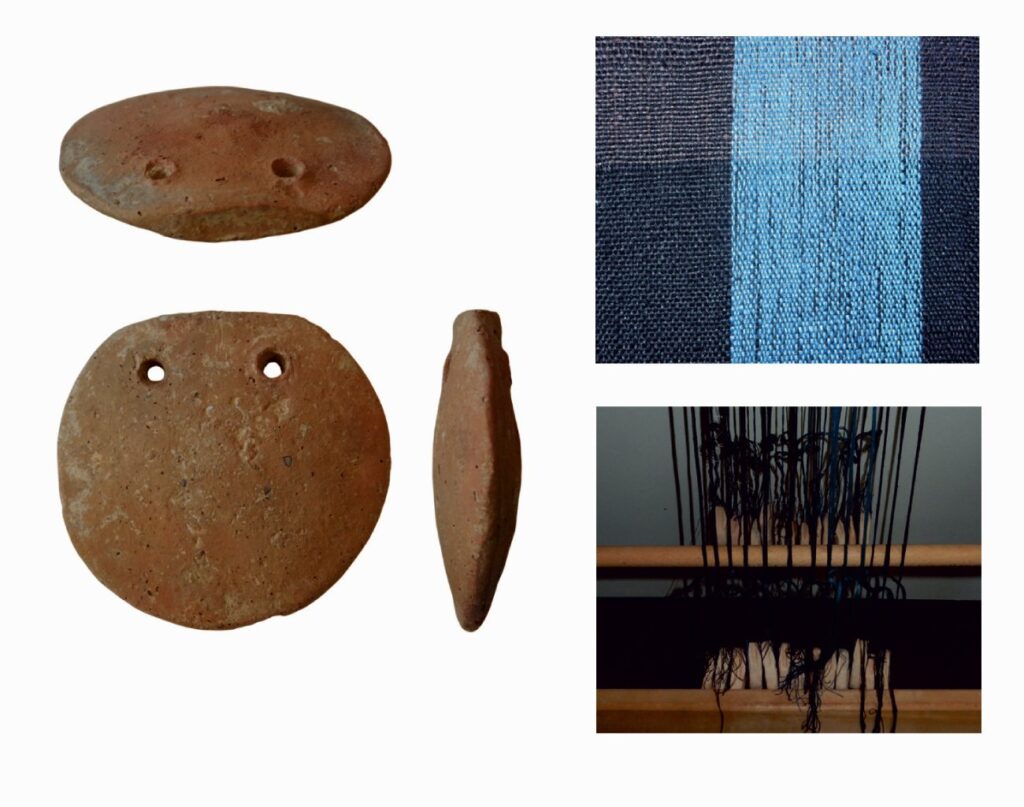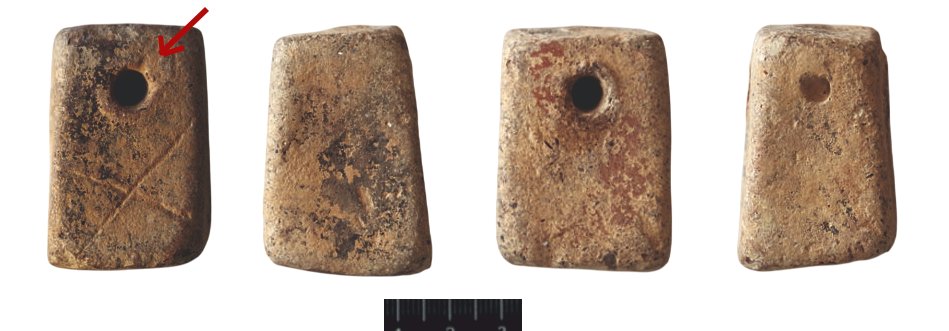Textile archaeology
In Minoan Crete, textiles and textile production were of great economic and cultural significance. A wide variety of textiles – such as clothing, maritime textiles (e.g., sails and ropes), household textiles (e.g., wall hangings, ceiling coverings, rugs, bedclothes, blankets), as well as bags, nets, accessories (e.g., belts, bands, scarves), threads and cords, and many other items – were essential for daily life and subsistence. Producing these goods required specialised knowledge, organisation, and significant resources and labour. However, since textiles were made from organic materials, they rarely survived in the archaeological contexts from the Bronze Age. As a result, the study of Minoan textiles also relies on indirect evidence, including tools, iconographic and textual sources, as well as various research methods such as scientific analyses, statistical studies and experimental archaeology.
Among the most abundant sources of information on Minoan textiles are textile tools – especially loom weights of various types and spindle whorls. At Sissi, these tools have been studied since the excavations began in 2007. Dr. Joanne Cutler led this research until her passing in 2018. Her analysis of tools from Zones 2 and 3 examined how the geometry of different tool forms (e.g., spherical, pyramidal, discoidal weights, and spools) influenced the qualities of textiles: whether these were fine or thick threads, dense or sparse weaves, and fine or coarser fabrics.
Since 2019, the study of textile tools has been continued by Prof. Agata Ulanowska from the Faculty of Archaeology, University of Warsaw. Her research focuses on further first-hand documentation of the tools, identification of their types, tools’ functionality and, in particular, the analyses of specific patterns of use-wear that provide insights into how these tools were handled in the loom set-up.
Prof. Agata Ulanowska
Faculty of Archaeology, University of Warsaw
Figures:
Fig. 1 A typical two-holed discoidal loom weight with a grooved top from Sissi, Zone 10, characteristic of Crete, alongside an experimentally reconstructed loom setup using this type of weight. The resulting linen fabric is warp-faced, meaning that within 1 cm² of fabric, there are more warp threads than weft threads. (Photos: A. Ulanowska)
Fig. 2 A truncated pyramidal loom weight from Sissi, Zone 10, marked with a cross. A failed piercing attempt is visible on one face. The arrow indicates use-wear in the form of a shallow, diagonal abrasion, which resulted from the suspension of warp threads when this tool was set up on the loom. (Photos: A. Ulanowska)

